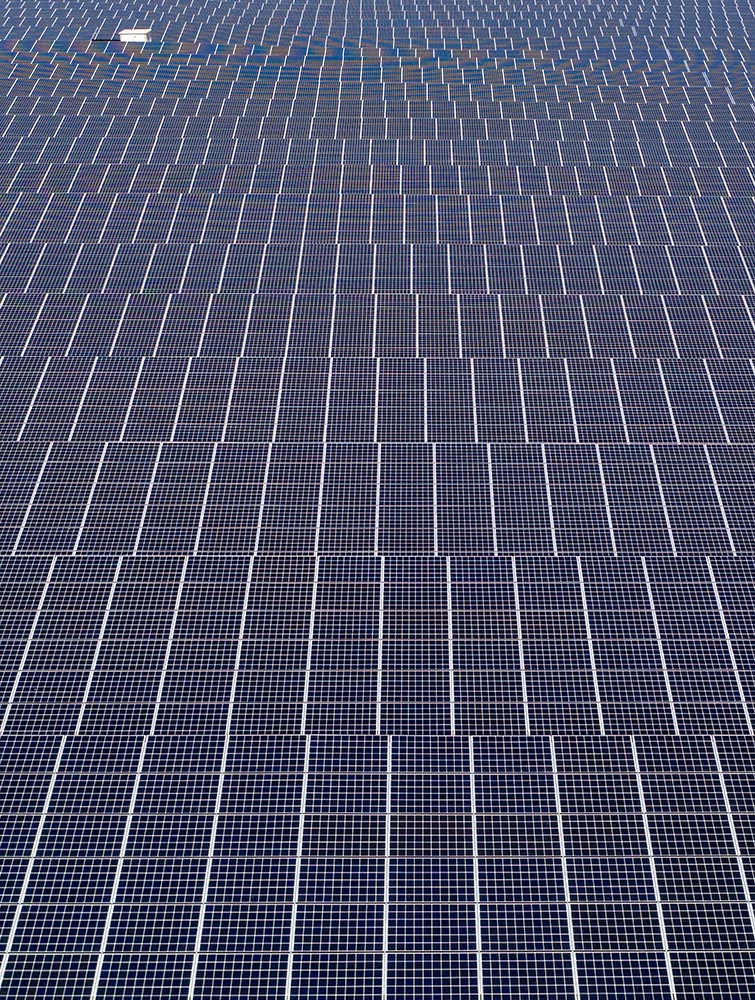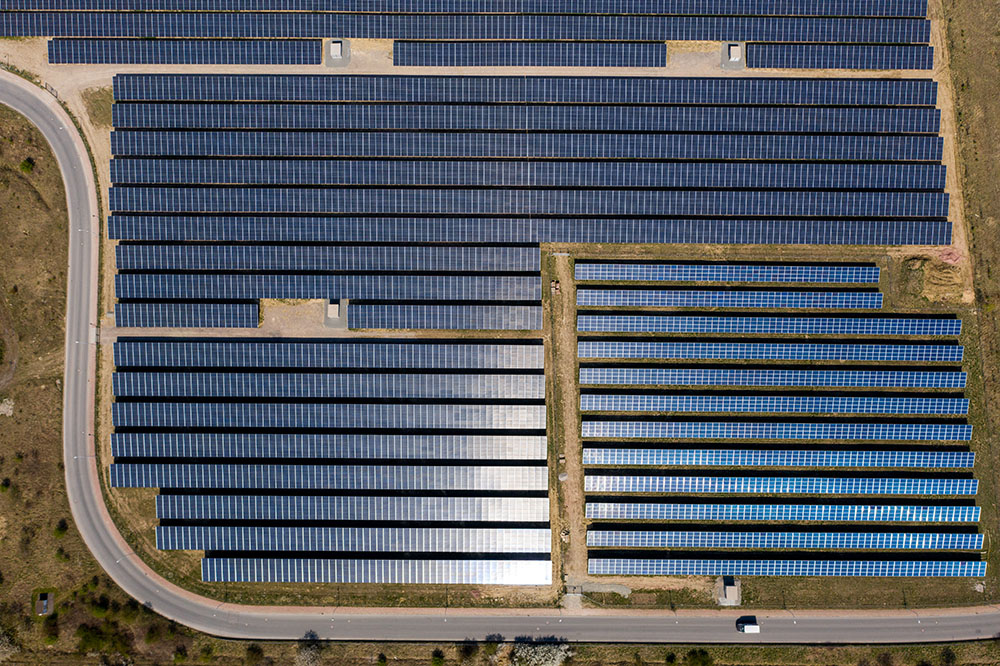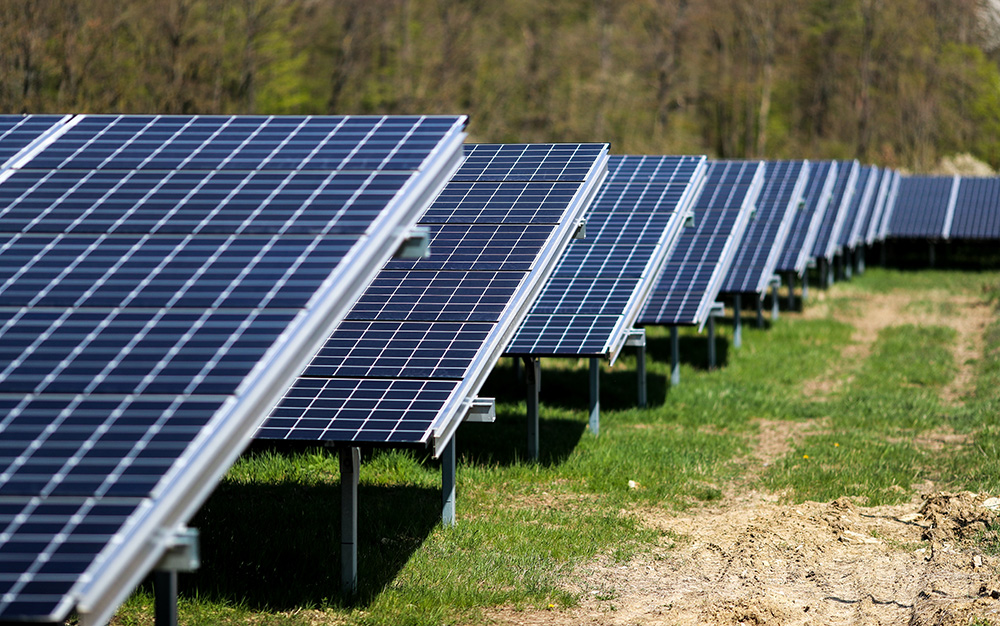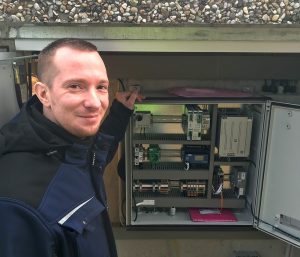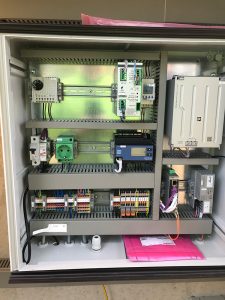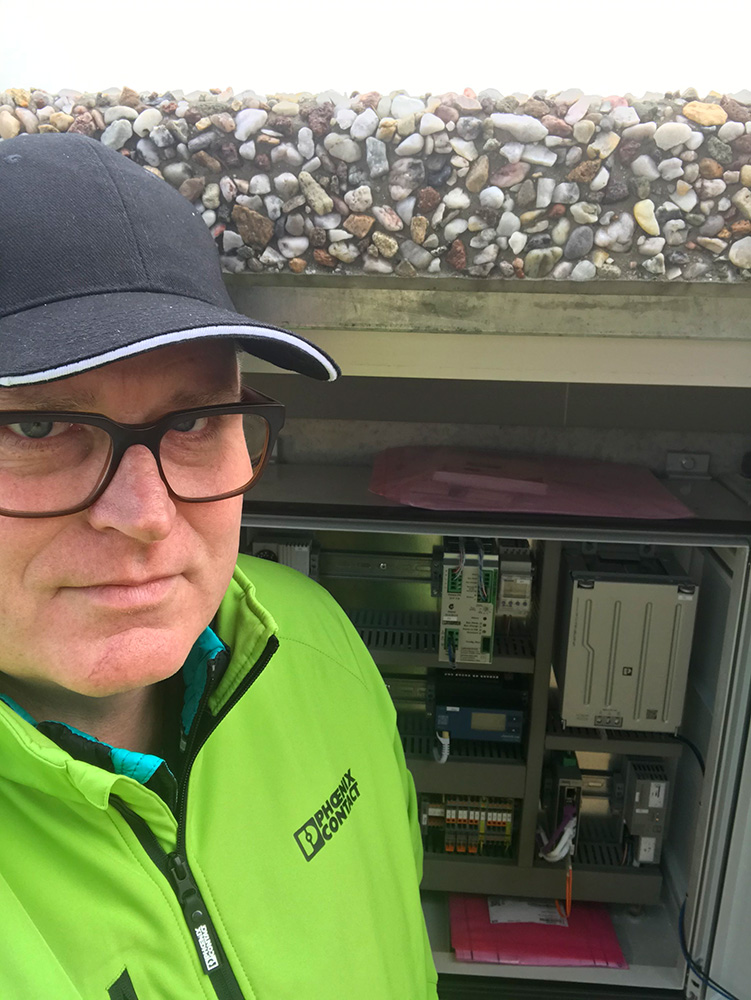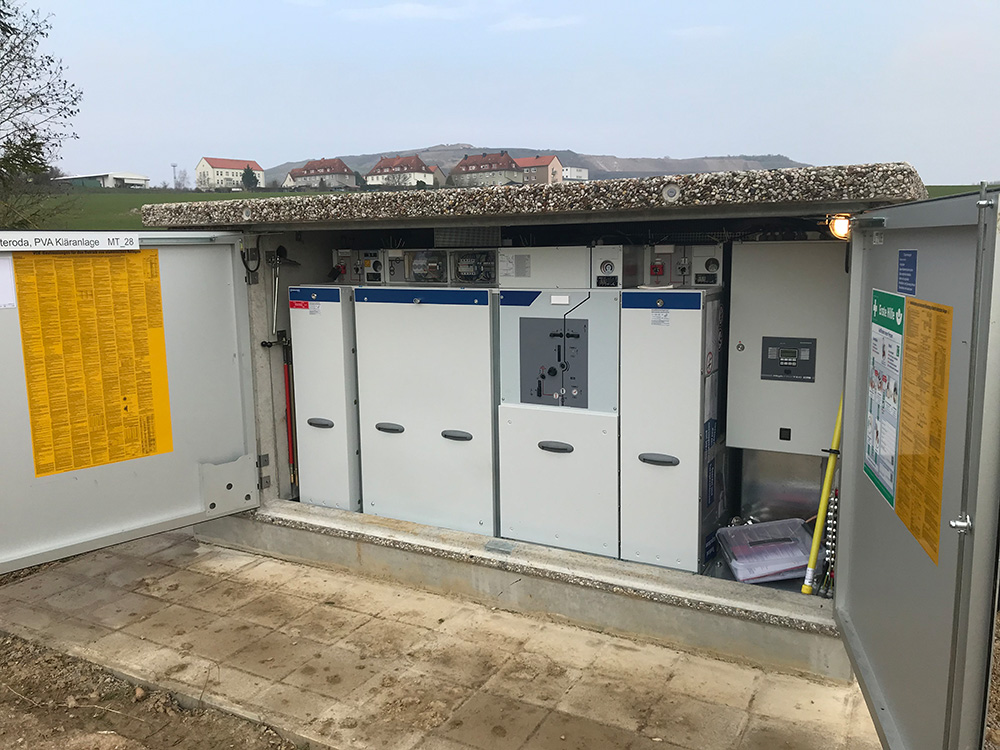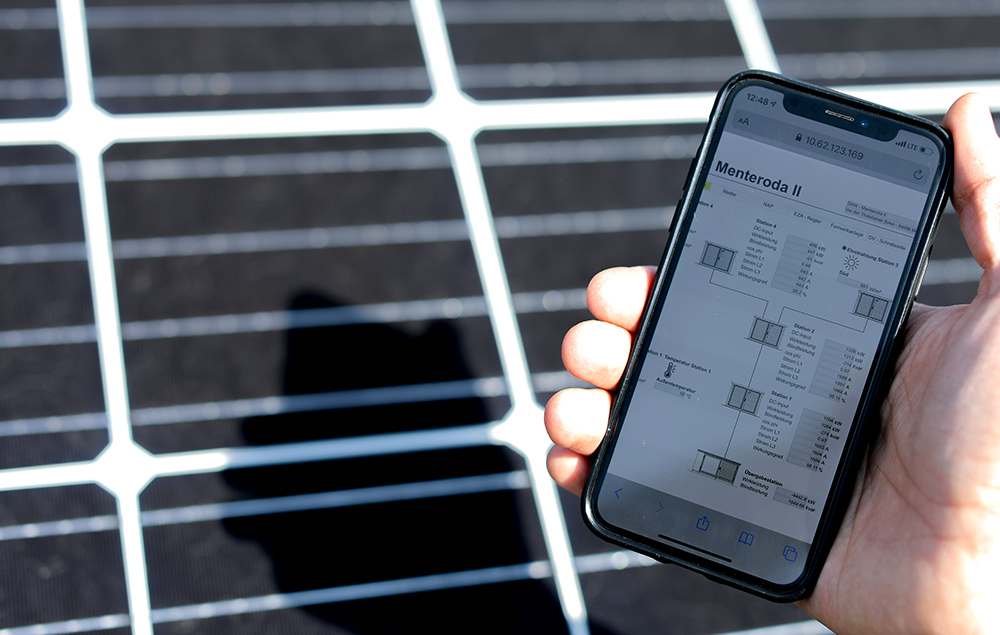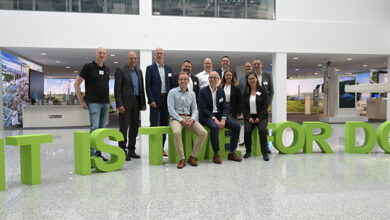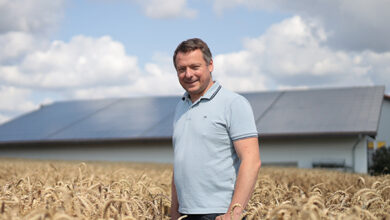The sun is shining when Christoph Werlitz opens the gates to the Menteroda solar park. It’s weather that’s appropriate for a visit to a plant that produces clean energy in the northern Thuringian municipality at the foot of the Harz Mountains in Germany. And in which an innovative PLCnext control system helps to bring more discipline to the fluctuations of the natural energy source.
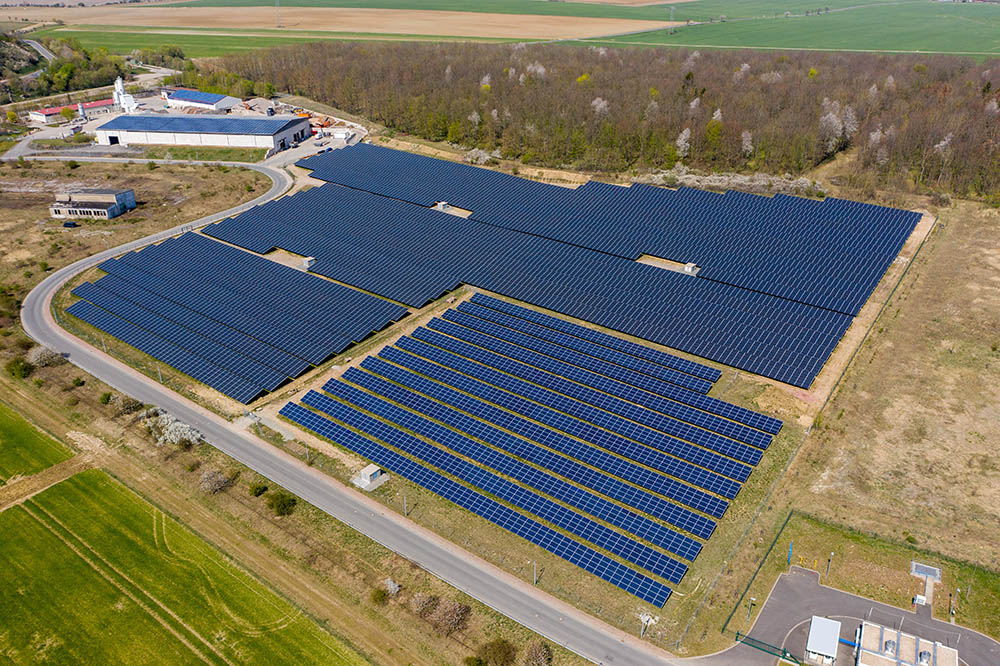
The Gemeinde Menteroda is actually known for its potash mining, which started here at the beginning of the 20th century and shaped the region for decades. But the mines are no longer active, the huge overburden is renaturalized and the mining is only a memory, which is commemorated with a small museum. Today, the beauties of the World Heritage Wartburg-Hainich attract visitors to the region – medieval towns, mighty castles and above all a lot of nature.
Regenerative mix
However, all of this is suffering massively from climate change. The extensive coniferous forests cannot tolerate the increasing droughts of recent years, the “wooden gold” of the forestry sector is being destroyed the by bark beetle – the dynamics of this development is particularly evident in the low mountain ranges.
No wonder that, here in particular, there is a great acceptance for renewable energies. ASG Engineering GmbH from Saxony-Anhalt operates the 6.05 MWp solar power plant Menteroda 2. A rooftop system and a large open space make up the overall power plant. The rooftop system was erected on a hall of the local recycling sorting company. Here, trash is sorted and the organic waste is fed into a biogas plant, which is located in the immediate vicinity.
To complete the jigsaw of regenerative energies, our gaze wanders towards the horizon past various wind turbine generators aimed at utilizing the energies of the moving atmosphere. But the three visitors are not here to see those today. The entire Menteroda solar park was connected to the grid in February 2020. The older part, Menteroda 1, has been in existence since the beginning of 2019. Christoph Werlitz is the contact person on site and is responsible for Menteroda 2 engineering. He is accompanied by René Wollmerstädt, the General Manager of ASG Solar.
ASG Solar was established by Jan Wecke and René Wollmerstädt in 2007. Since then, the company has planned, constructed,and operated plants. Wollmerstädt is responsible for the technical side of the “Generating energy from the sun” business model. Today’s third member of the group is Burkhard Dittmann, who works on the sales service side for Phoenix Contact and who is an expert in the energy sector and in integrating renewable energies.
Help for self-help
Christoph Werlitz explains, “Menteroda was not just planned and implemented by ASG Solar, it is also operated by the company. While we still had to draw upon external services for Menteroda 1, we planned Menteroda 2 and put it into operation ourselves.”
Wollmerstädt adds, “This was planned and implemented by our subsidiary, ASG Engineering.” Werlitz proudly adds, “I manufactured the control cabinets for Menteroda 2 myself. With this approach, we are always kept fully up-to-date about the condition of the plant and can act largely independently, without outside help.”
During the planning phase, Christoph Werlitz attended a technical training course conducted by Phoenix Contact. “The then-brand-new PGS controllers were introduced there. These generation system controllers are indispensable in the field of renewable energies. They make it possible to regulate the strongly fluctuating feeds into the power grid in such a way that there are no interfering peaks, for example when the sun is shining as intensely as it is today.”
Engineer Dittmann points towards a bright blue sky. “The challenge of making the power grids of the future as bi-directional as possible is the curse and blessing of renewables. While in classical power generation with coal, gas, or nuclear energy finely tuned and long-plannable feed-ins into the power grids take place continuously, the activity of sun or wind is not linear and cannot be planned. So we need smart grids that are able to cope with strongly fluctuating feed-ins.”
Standardized and certified
The three experts leave the elevated solar panels behind them and drive to the grid connection point. Burkhard Dittmann has technicians from Werlitz show him the PGS controllers used and explains, “The special thing about our controllers is their ability to be adapted to very different parameters. The heart of the controller, which is certified in accordance with the VDE AR N 4110/4120 standard, is our PLCnext industrial controller. Its ability to process different software protocols was particularly important here.
ASG Solar defined guidelines on how the solar power plant should operate. And Christoph Werlitz was then able to download the appropriate PGS controller software from PLCnext’s own app store and adjust the parameters. The functionality for the controller was loaded into PLCnext and thus a solution was found that is precisely tailored to the situation here on site.”
Christoph Werlitz adds, “It was particularly important to us that the controller could be adapted. With this capability we do not lose any of the functionalities of the classic control technology but, on the contrary, we can use these controllers in other areas,such as wind turbine generators or combined heat and power plants. This means that a single technology can handle a wide range of energy mixes. This will increasingly be the challenge of the future – the electricity grids will be increasingly burdened by changing feeders and storage technologies. With the PGS controller from Phoenix Contact we are ready for the future.”
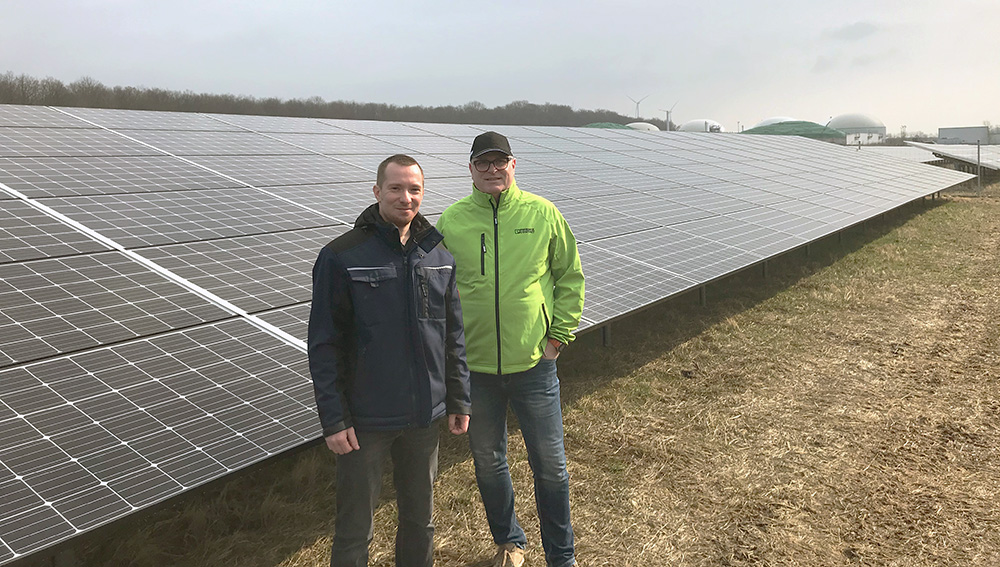
The Menteroda 2 plant is one of the first plants to use the new PGS controller, because the technological work of art was only granted the necessary certification shortly before installation and commissioning. And so the small town at the foot of the Harz Mountains may soon gain a name in the field of regenerative energy production that sounds just as good as it did in the days of potash mining.
